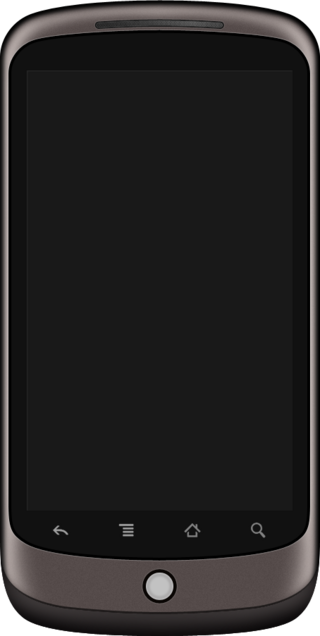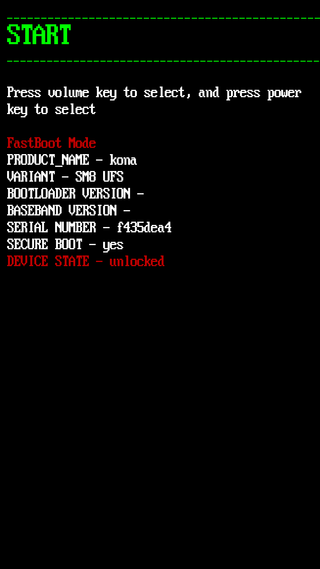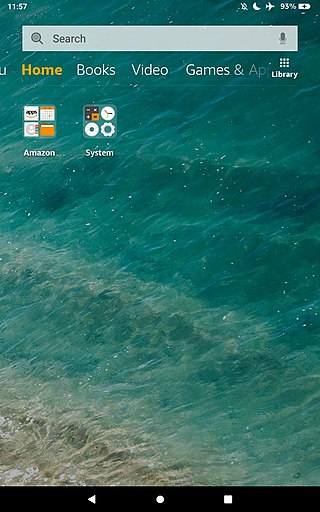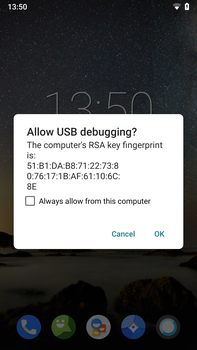A software development kit (SDK) is a collection of software development tools in one installable package. They facilitate the creation of applications by having a compiler, debugger and sometimes a software framework. They are normally specific to a hardware platform and operating system combination. To create applications with advanced functionalities such as advertisements, push notifications, etc; most application software developers use specific software development kits.

QEMU is a free and open-source emulator. It emulates a computer's processor through dynamic binary translation and provides a set of different hardware and device models for the machine, enabling it to run a variety of guest operating systems. It can interoperate with Kernel-based Virtual Machine (KVM) to run virtual machines at near-native speed. QEMU can also do emulation for user-level processes, allowing applications compiled for one architecture to run on another.
Android is a mobile operating system based on a modified version of the Linux kernel and other open-source software, designed primarily for touchscreen mobile devices such as smartphones and tablets. Android is developed by a consortium of developers known as the Open Handset Alliance, though its most widely used version is primarily developed by Google. It was unveiled in November 2007, with the first commercial Android device, the HTC Dream, being launched in September 2008.

The Nexus One is an Android smartphone designed and manufactured by HTC as Google's first Nexus smartphone. The Nexus became available on January 5, 2010, and features the ability to transcribe voice to text, an additional microphone for dynamic noise suppression, and voice guided turn-by-turn navigation to drivers.
The Android SDK is a software development kit for the Android software ecosystem that includes a comprehensive set of development tools. These include a debugger, libraries, a handset emulator based on QEMU, documentation, sample code, and tutorials. The SDK is part of the official Android Studio IDE but its various tools and resources can be used independently.
Rooting is the process by which users of Android devices can attain privileged control over various subsystems of the device, usually smartphones and tablets. Because Android is based on a modified version of the Linux kernel, rooting an Android device gives similar access to administrative (superuser) permissions as on Linux or any other Unix-like operating system such as FreeBSD or macOS.

Fastboot is a communication protocol used primarily with Android devices. It is implemented in a command-line interface tool of the same name and as a mode of the bootloader of Android devices. The tool is included with the Android SDK package and used primarily to modify the flash filesystem via a USB connection from a host computer. It requires that the device be started in Fastboot mode. If the mode is enabled, it will accept a specific set of commands, sent through USB bulk transfers. Fastboot on some devices allows unlocking the bootloader, and subsequently, enables installing custom recovery image and custom ROM on the device. Fastboot does not require USB debugging to be enabled on the device. To use fastboot, a specific combination of keys must be held during boot.
Sideloading describes the process of transferring files between two local devices, in particular between a personal computer and a mobile device such as a mobile phone, smartphone, PDA, tablet, portable media player or e-reader.

Android software development is the process by which applications are created for devices running the Android operating system. Google states that "Android apps can be written using Kotlin, Java, and C++ languages" using the Android software development kit (SDK), while using other languages is also possible. All non-Java virtual machine (JVM) languages, such as Go, JavaScript, C, C++ or assembly, need the help of JVM language code, that may be supplied by tools, likely with restricted API support. Some programming languages and tools allow cross-platform app support. Third party tools, development environments, and language support have also continued to evolve and expand since the initial SDK was released in 2008. The official Android app distribution mechanism to end users is Google Play; it also allows staged gradual app release, as well as distribution of pre-release app versions to testers.
Android Developer Lab is a series of mobile software development-focused events around the world held annually by Google. They include bootcamps and technical sessions focused on Android and give participants an excellent chance to learn about the state of the Android platform, get hands-on with the latest version of the SDK, test applications on the latest sample Android devices, get questions answered by Google engineers from the Android team as well as meet other like-minded members of the local Android developer community.

Google Cloud Messaging (GCM) was a mobile notification service developed by Google that enables third-party application developers to send notification data or information from developer-run servers to applications that target the Google Android Operating System, as well as applications or extensions developed for the Google Chrome internet browser. It was available to developers free of charge. The GCM Service was first announced in June 2012 as a successor to Google's now-defunct Android Cloud to Device Messaging (C2DM) service, citing improvements to authentication and delivery, new API endpoints and messaging parameters, and the removal of limitations on API send-rates and message sizes. It has been superseded by Google's Firebase Cloud Messaging (FCM) on May 29, 2019.

Fire OS is a mobile operating system based on the Android Open Source Project (AOSP). It is developed by Amazon for their devices. Fire OS includes proprietary software, a customized user interface primarily centered on content consumption, and heavy ties to content available from Amazon's storefronts and services.
Google Play Services is a proprietary software package produced by Google for installation on Android devices. It consists of background services and libraries for use by mobile apps running on the device. When it was introduced in 2012, it provided access to the Google+ APIs and OAuth 2.0. It expanded to cover a variety of Google services, allowing applications to communicate with the services through common means.

Odin is a utility software program developed and used by Samsung internally which is used to communicate with Samsung devices in Odin mode. It can be used to flash a custom recovery firmware image to a Samsung Android device. Odin is also used for unbricking certain Android devices. Odin is the Samsung proprietary alternative to Fastboot.
Tasker is an Android application originally developed by a developer known as "Pent", and later purchased by João Dias. It enables performing user-defined actions based on contexts in user-defined profiles, activated by click- or timer-based home screen widgets. It is expandable via AutoApps plugins from the developer and third-party apps. The app is available from Google Play; a 7-day free trial version which does not allow restoring backups can be downloaded as an APK on the app's website.
Firebase Cloud Messaging (FCM), formerly known as Google Cloud Messaging (GCM), is a cross-platform cloud service for messages and notifications for Android, iOS, and web applications, which as of May 2023 can be used at no cost. Firebase Cloud Messaging allows third-party application developers to send notifications or messages from servers hosted by FCM to users of the platform or end users.

Android 10 is the tenth major release and the 17th version of the Android mobile operating system. It was first released as a developer preview on March 13, 2019, and was released publicly on September 3, 2019.

Snaptube is a free Android app that downloads video, audio and also works as a social media aggregator. It provides video resolutions in a range of 144p, 720p, 1080p HD, 2K HD, 4K HD and audio formats in MP3 and M4A. With Snaptube, users can look for content on all their platforms without using numerous apps. As of June 2020, the application is used by over 100 million users.

Bootloader unlocking is the process of disabling the bootloader security that makes secure boot possible. It can make advanced customizations possible, such as installing a custom firmware. On smartphones this can be a custom Android distribution or another mobile operating system. Some bootloaders are not locked at all, others can be unlocked using a standard command, others need assistance from the manufacturer. Some do not include an unlocking method and can only be unlocked through a software exploit.














